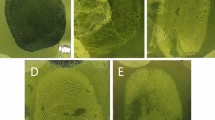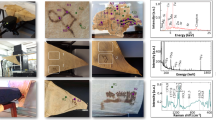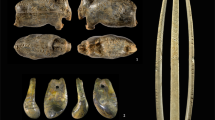Abstract
IN my letter on this subject that appeared in NATURE (vol. li. p. 199, December 27, 1894), I have suggested that the ancient Japanese usage on divorce-papers of the finger-marks was probably adopted from the Chinese “Laws of Yung-Hwui” (circa 650–55 A.D.), issued under the reign of the third emperor of the Tang. As these “Laws,” however, are nowadays lost1, I had but little hope to investigate further the matter. However, elsewhere a passage has lately been found, giving confirmation to my view that the Chinese usage of the finger-prints for identification was current in the time of the same dynasty of Tang.
This is a preview of subscription content, access via your institution
Access options
Subscribe to this journal
Receive 51 print issues and online access
$199.00 per year
only $3.90 per issue
Buy this article
- Purchase on Springer Link
- Instant access to full article PDF
Prices may be subject to local taxes which are calculated during checkout
Similar content being viewed by others
References
K. Konakamura in "Nipon Rikishi Hyôrin," Tôkyô, 1893, vol. vi. p. 24.
In a translation by E. Renaudot (Paris, 1718, p. 33), and thence in Pinkerton's "Collection," London, 1811, vol. vii. p. 192, this sentence is rendered thus: "When any person commences a suit against another, he sets down his claim in writing, and the defendant writes down his defence, which he signs, and holds between his fingers" Here no mention is made of finger-marks; instead of it a meaningless clause is given. Reinaud says Renaudot committed errors in his version ("Introduction," p. ii.), and the present case is apparently one.
"Über den Magnetismus der Planeten," von Ernst Leyst . ("Repertorium für Meteorologie," vol. xvii. No. 1. St. Petersburg, 1894.)
Rights and permissions
About this article
Cite this article
MINAKATA, K. The Antiquity of the Finger-Print Method. Nature 53, 317–318 (1896). https://doi.org/10.1038/053317e0
Issue Date:
DOI: https://doi.org/10.1038/053317e0
Comments
By submitting a comment you agree to abide by our Terms and Community Guidelines. If you find something abusive or that does not comply with our terms or guidelines please flag it as inappropriate.



